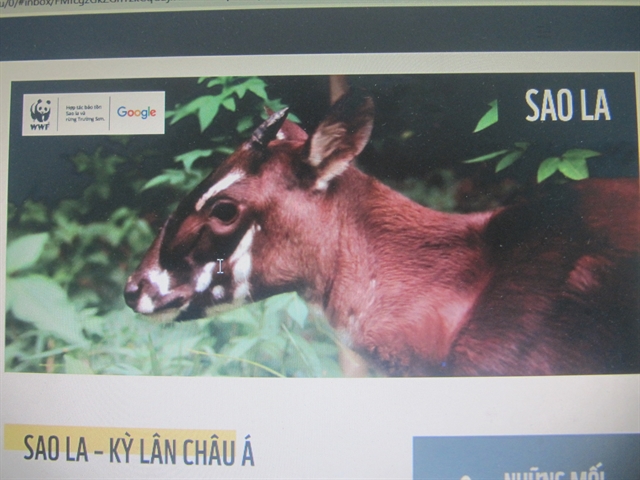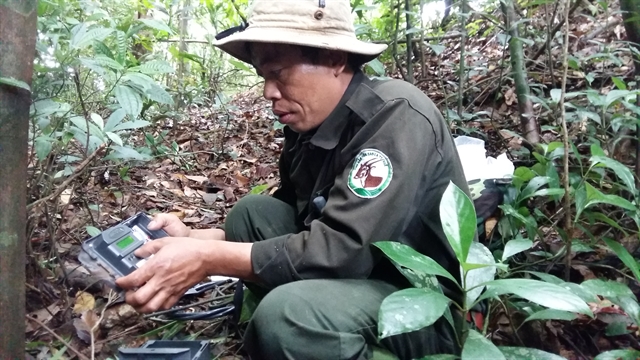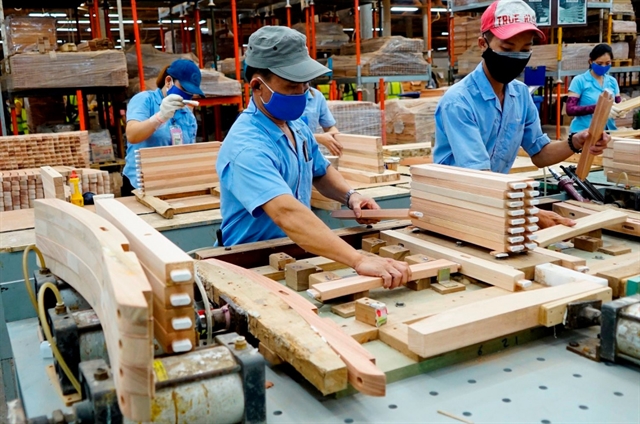 Environment
Environment

Google joined forces with WWF-Viet Nam, to kick off the ‘Preserve the Saola’s footprints’ campaign to save this endangered species by raising awareness and calling actions from the public on World Saola Day (July9).

|
| An introduction image of saola. Google and WWF-Viet Nam kicked off the ‘Preserve the Saola’s footprints’ campaign to save this endangered species by raising awareness and calling for actions from the public. Photo courtesy of WWF-Viet Nam |
HCM CITY — Google has joined forces with the WWF-Viet Nam on World Saola Day (July 9) to help raise awareness and call for action to save this unique and endangered species.
For its part Google was launching a 3D Augmented Reality (AR 3D) saola on Google Search that global users use to view a saola close up, with full details of this spectacular species, on their smart devices.
WWF-Viet Nam said this was the first time Google had digitised one of Việt Nam’s rare wild animals and produced an AR 3D replica.
The saola, native to the Annamite Mountains, spanning the border between Việt Nam and Laos, is symbolic of the rich biodiversity of Việt Nam and the wider Mekong region.

|
| A saola photographed in the wild. Saola is considered to be critically endangered with the global population estimated to be less than 100. Photo courtesy of WWF-Viet Nam |
In launching the ‘Preserve the Saola’s footprints’ campaign and AR 3D Saola, Google and the WWF-Viet Nam hope to bring the species closer to the public and help people to better understand the way that their behaviour and activity impacts nature and rare wildlife.
WWF-Viet Nam said the campaign, which started in July, will include two phases.
The first phase, titled: ‘Follow the Saola’s footprints’, will bring to the audience interesting information about Saola, resolving common misunderstandings about the critically endangered species.
In the second phase, via online interactive activities, the public will learn about how their daily consumption behaviour may impact the saola, other wild animals and nature.
Trâm Nguyễn, Country Manager of Việt Nam, Laos and Cambodia at Google Asia Pacific, said: “By bringing the AR 3D model of Saola on Google search, we’d like to introduce to the world this rare endangered animal. You will get to see them up close, in the most vivid way possible.
“Google hopes to apply its technology in conservation efforts, digitizing information and images, so that they can be accessed by everyone which is the objective of this campaign.”
Dr. Văn Ngọc Thịnh, CEO of WWF-Viet Nam, said: “The first time I saw the Saola AR, I was so excited by its vibrancy and authenticity. It is really hard to tell the difference from the real Saola, which I was lucky enough to be one of the few scientists in the world to see in real life.”

|
| A local ranger sets up a camera trap to take photos of saola in the saola Reserve in the central Thừa Thiên Huế Province. VNS Photo Công Thành |
“Hopefully, this will help the public learn more about this species and give the public a new appreciation of its unique beauty.”
“WWF-Viet Nam appreciates Google’s effort in using their brand to support conservation and biodiversity. We are also delighted to join forces with Google in other activities to raise public awareness and call for public actions for the saola, bringing hope for a brighter future for our country’s biodiversity.”
Since the species’ was first discovered in 1992, in Vũ Quang Nature Reserve, in Hà Tĩnh, only about 10 saola have ever been captured alive. They were all caught by local villagers in Laos and Việt Nam but without professional veterinary and husbandry care, the longest that any of the animals lived was a few months at most.
The last saola known to be captured alive was in 2010 in a village in Laos. It died in less than a week.
Biologists have also only photographed the species five times in the wild in the last 25 years, all by camera traps — twice in Laos and three times in Việt Nam.
The most recent camera trap photos were taken in 2013, when the WWF captured images of the animal in a saola nature reserve in central Việt Nam. It was the first photo of a saola in the wild in more than 15 years.
Saola are nicknamed the Asian ‘unicorn’. They are difficult to find, living in dense forests, in remote and difficult terrain.
The saola is considered to be critically endangered with the global population being estimated to be less than 100. Habitat loss caused by human development, rampant snaring to supply the illegal wildlife trade, and climate change are threatening the entire species with extinction.
The Bạch Mã National Park in the central Thừa Thiên-Huế province was selected as the site for the world’s only breeding centre for the saola. - VNS




